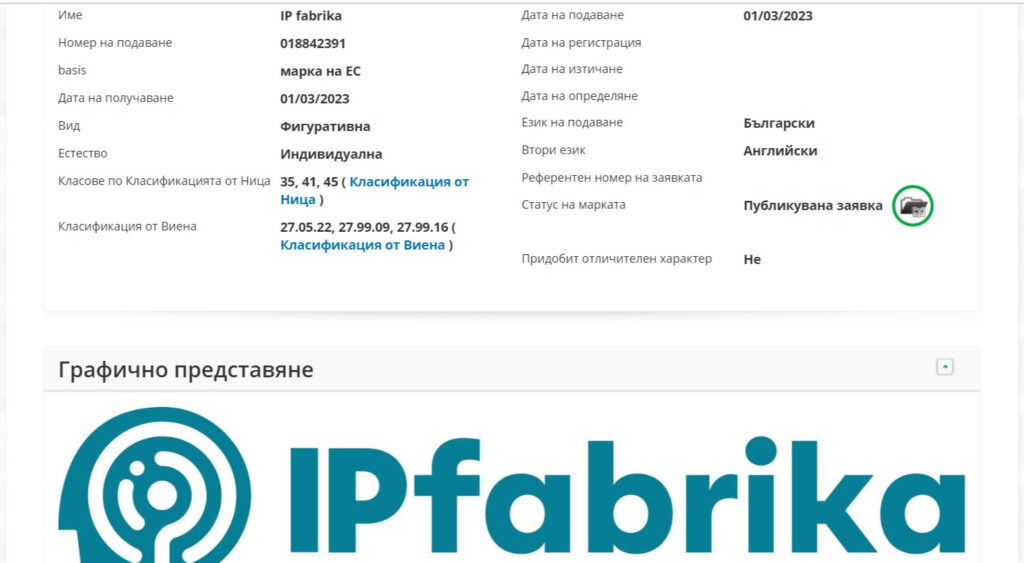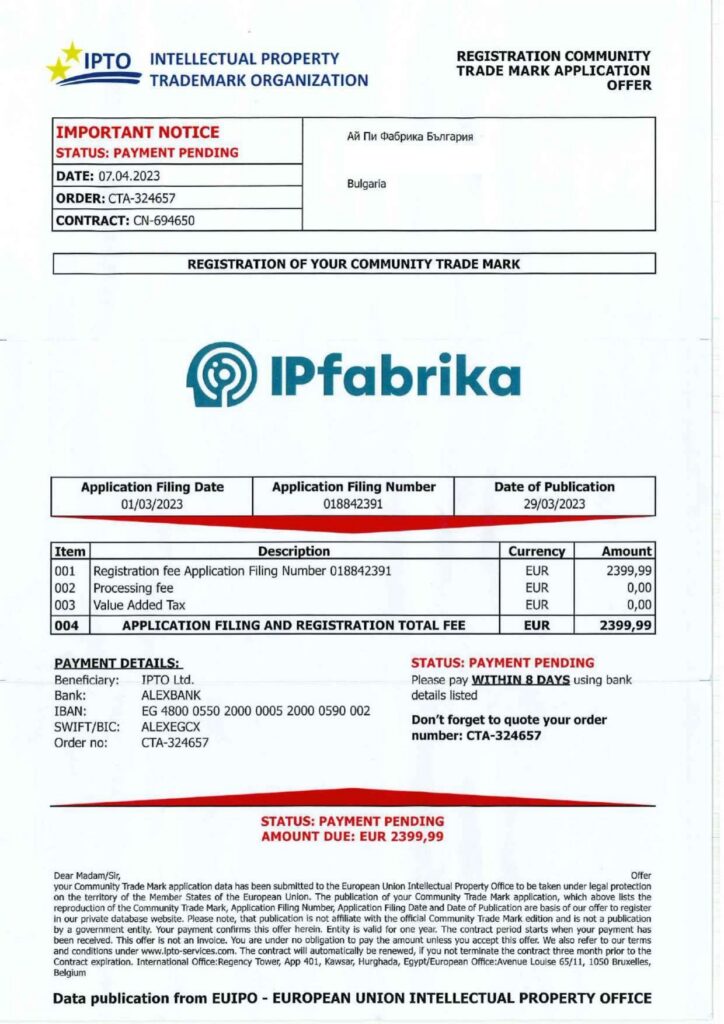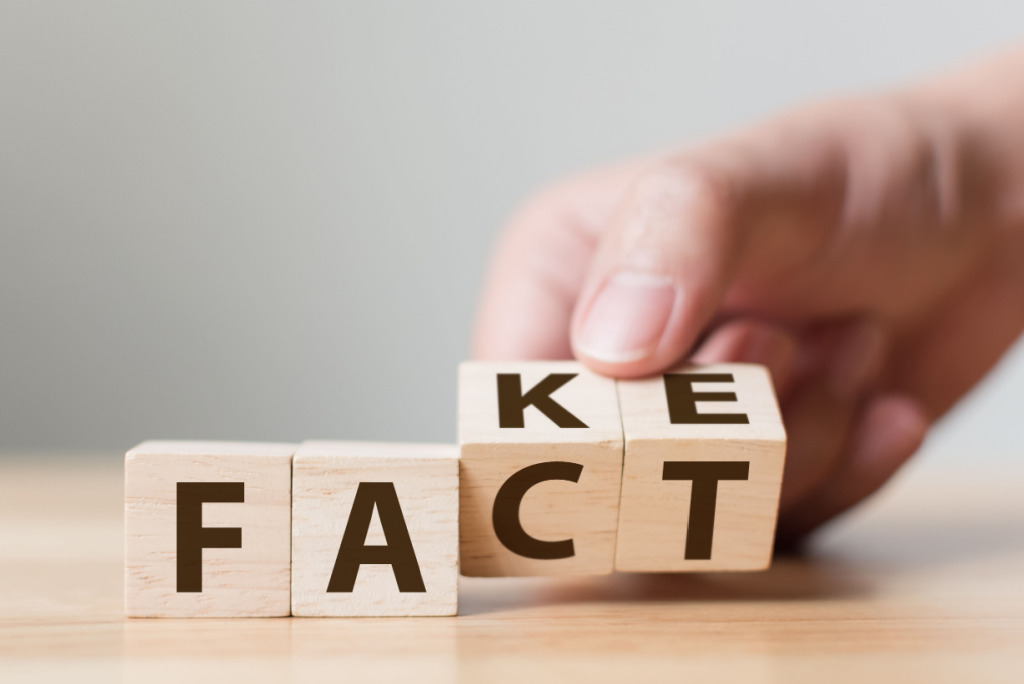Once you have filed your trademark in the European Union Intellectual Property Office (EUIPO), the trademark will be published in 23 official EU languages. This makes the fact public that you are the owner of this mark for specific goods and services. The trademark owner has the right to use the trademark and to prohibit third parties from using it in their commercial activities without express consent.
This is a published trademark in the register of the European Union Intellectual Property Office:

Any person has the right to access the register and can see what trademarks are published and who owns them. But how do we protect ourselves from fraudulent use of our information?
A large number of trademark applicants are subject to such fraud attempts.
A misleading invoice is sent to the address of the trade mark applicant which at first sight looks like a message sent by EUIPO. However, if we look more carefully we will find that despite the identical details of our trademark such as application number, publication date and logo, the message is sent by a company that resembles EUIPO, for example, IPTO (Intellectual Property Trade Mark Organization), EUIPA (European Intellectual Property Agency), EIPO (European Intellectual Property Office) and many others.
Our trademark has also become a target of fraud and this is the misleading invoice we have received:

The notice is an invitation to pay a “registration fee” to have the trademark published. We can see bank details and the amount that needs to be transferred.
However, if we read the fine print, we will find that it is actually an offer to register on a website with a private database that has nothing in common with the official website of the European Intellectual Property Office. It is described that you have no obligation to pay, but in the event that you do, it will be deemed that you have accepted the registration offer.
These are just some of the misleading invoices that are sent to users to pay for services such as publishing, registering or entering trademarks and designs.
How can we protect ourselves from such scams?
- Check the source of information – it should be official.
- Read everything including the fine print.
- It is important to know that EUIPO does not send invoices requesting direct payment of amounts.
- In most cases the fees do not correspond to the classes you have requested.
- You can receive secure information in your account (User Area) at EUIPO as a message. This communication channel is safe and is an official way to communicate with the European Intellectual Property Office.
- EUIPO only uses two Spanish bank accounts for payments which are published on the website and any bank account that differs from the official one should be suspect.
- Contact a specialist before making the transaction if you have any doubts about authenticity.
Contact us if you need consultation or support: [email protected] и +359 88 333 3797


